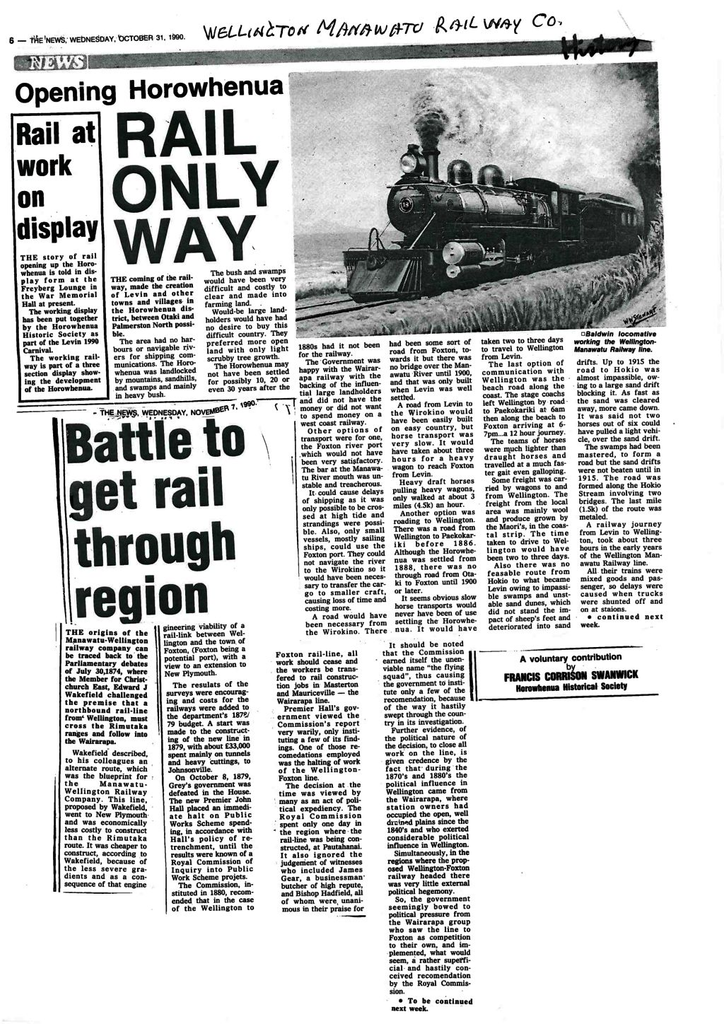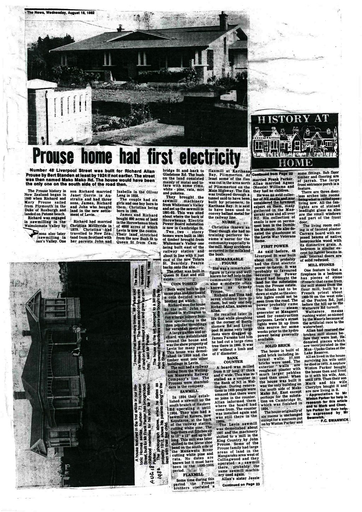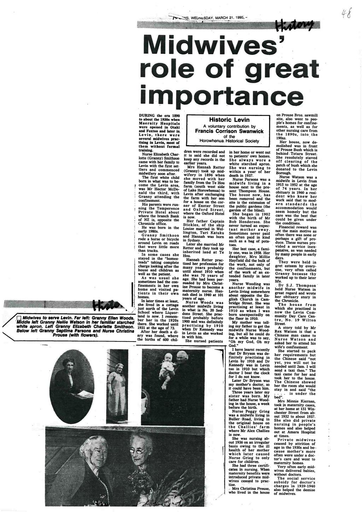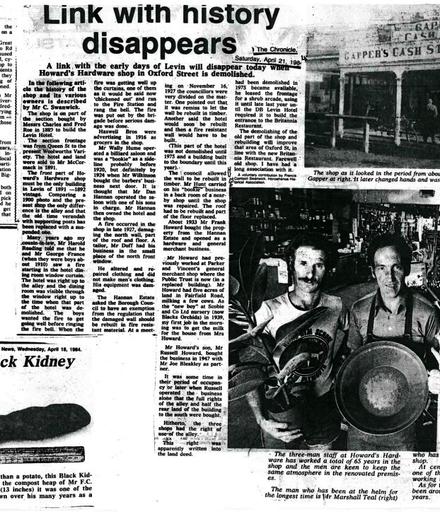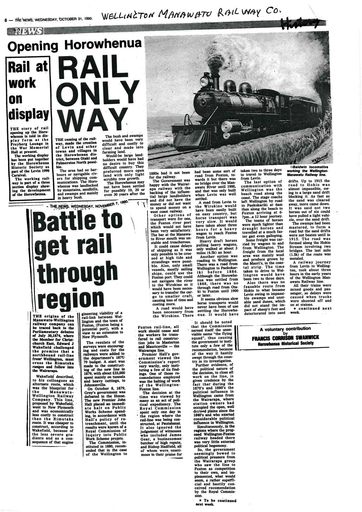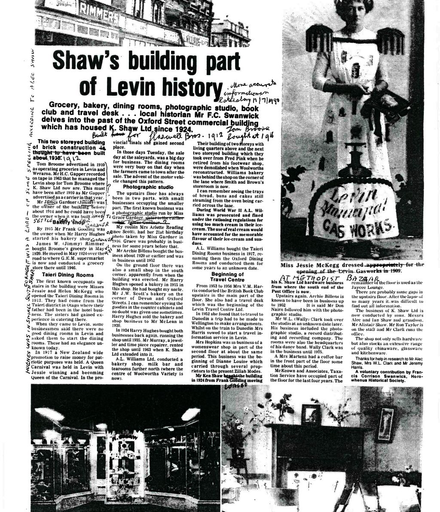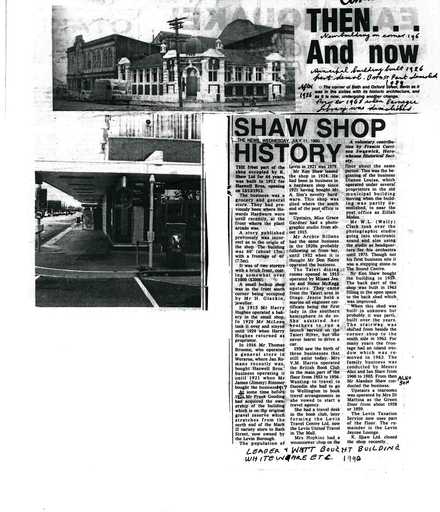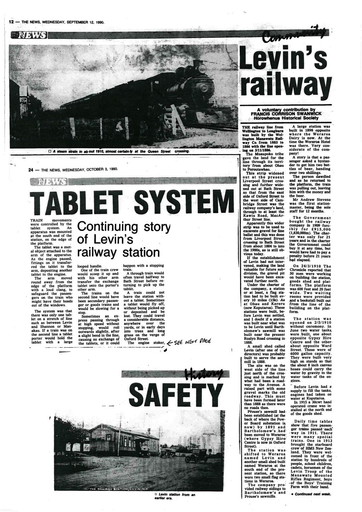 The area had no harbours or navigable rivers for shipping communications. The Horowhenua was landlocked by mountains, sandhills, and swamps and mainly covered in heavy bush.
The area had no harbours or navigable rivers for shipping communications. The Horowhenua was landlocked by mountains, sandhills, and swamps and mainly covered in heavy bush.
The bush and swamps would have been very difficult and costly to clear and made into farming land.
Would-be large land-holders would have had no desire to buy this difficult country. They preferred more open land with only light scrubby tree growth.
The Horowhenua may not have been settled for possibly 10, 20 or even 30 years after the 1880s had it not been for the railway.
The Government was happy with the Wairarapa railway, with the backing of the influential large landholders, and did not have the money, or did not want to spend money on a west coast railway.
Other options of transport were for one, the Foxton river port which would not have been very satisfactory. The bar at the Manawatu River mouth was unstable and treacherous. It could cause delays of shipping as it was only possible to be crossed at high tide and strandings were possible. Also, only small vessels, mostly sailing ships, could use the Foxton port.
They could not navigate the river to the Whirokino, so it would have been necessary to transfer the cargo to smaller craft, causing loss of time and costing more.
A road would have been necessary from the Whirokino. There had been some sort of road from Foxton, towards it but there was no bridge over the Manawatu River until 1900, and that was only built when Levin was well settled.
A road from Levin to the Whirokino would have been easily built on easy country, but horse transport was very slow. It would have taken about three hours for a heavy wagon to reach Foxton from Levin.
Heavy draft horses pulling heavy wagons, only walked at about 3 miles (4.5k) an hour.
Another option was roading to Wellington. There was a road from Wellington to Paekakariki before 1886. Although the Horowhenua was settled from 1888, there was no through road from Otaki to Foxton until 1900 or later.
It seems obvious slow horse transports would never have been of use settling the Horowhenua. It would have taken two to three days to travel to Wellington from Levin. The last option of communication with Wellington was the beach road along the coast. The stage coaches left Wellington by road to Paekakariki at 6am then along the beach to Foxton arriving at 6-7pm… a 12 hour journey.
The teams of horses were much lighter than draught horses and travelled at a much faster gait, even galloping.
Some freight was carried by wagons to and from Wellington. The freight from the local area was mainly wool and produce grown by the Maori, in the coastal strip. The time taken to drive to Wellington would have been two to three days.
Also there was no feasible route from Hokio to what became Levin owing to impassible swamps and unstable sand dunes, which did not stand the impact of sheep’s feet and deteriorated into sand drifts. Up to 1915 the road to Hokio was almost impassible, owing to a large sand drift blocking it. As fast as the sand was cleared away, more came down. It was said not two horses out of six could have pulled a light vehicle, over the sand drift.
The swamps had been mastered, to and from a road but the sand drifts were not beaten until in 1915. The road was formed along the Hokio Stream involving two bridges. The last mile (1.5k) of the route was metalled.
A railway journey from Levin to Wellington, took about three hours in the early years of the Wellington Manawatu Railway line.
All their trains were mixed goods and passenger, so delays were caused when trucks were shunted off and on at stations.

